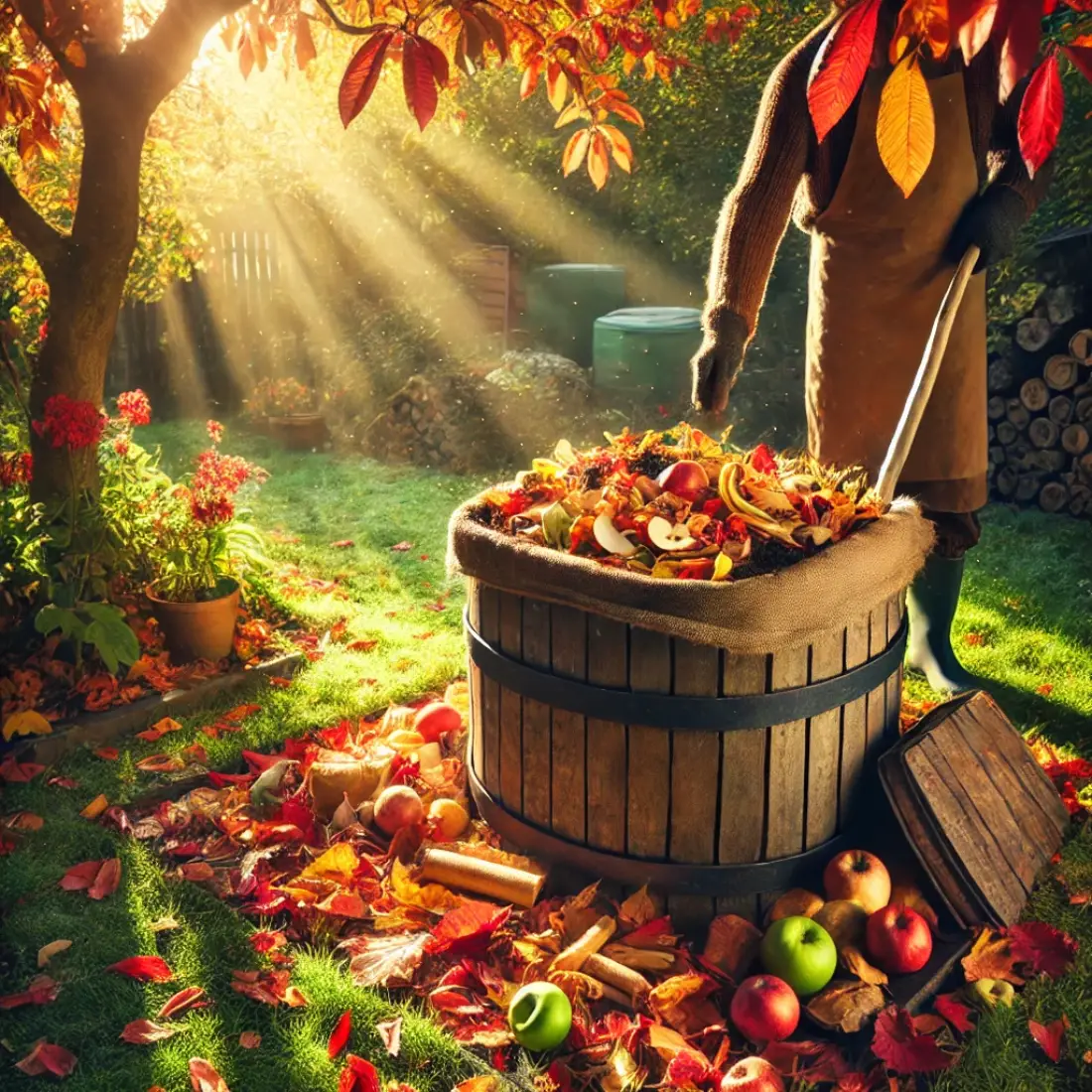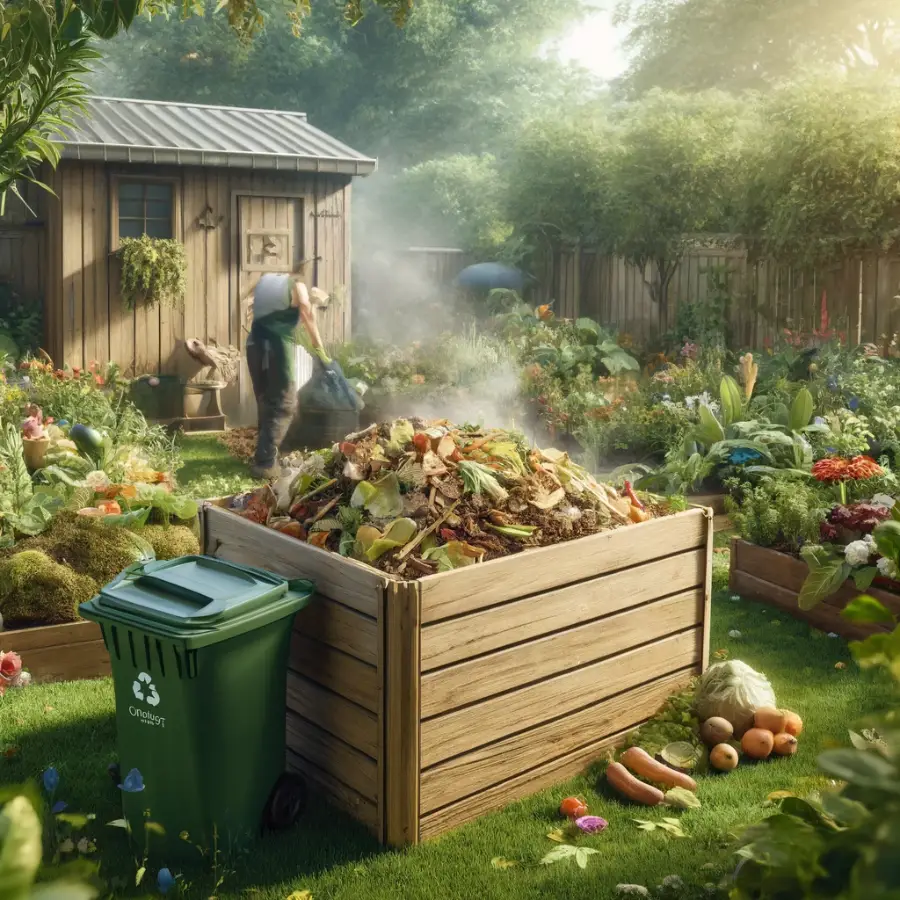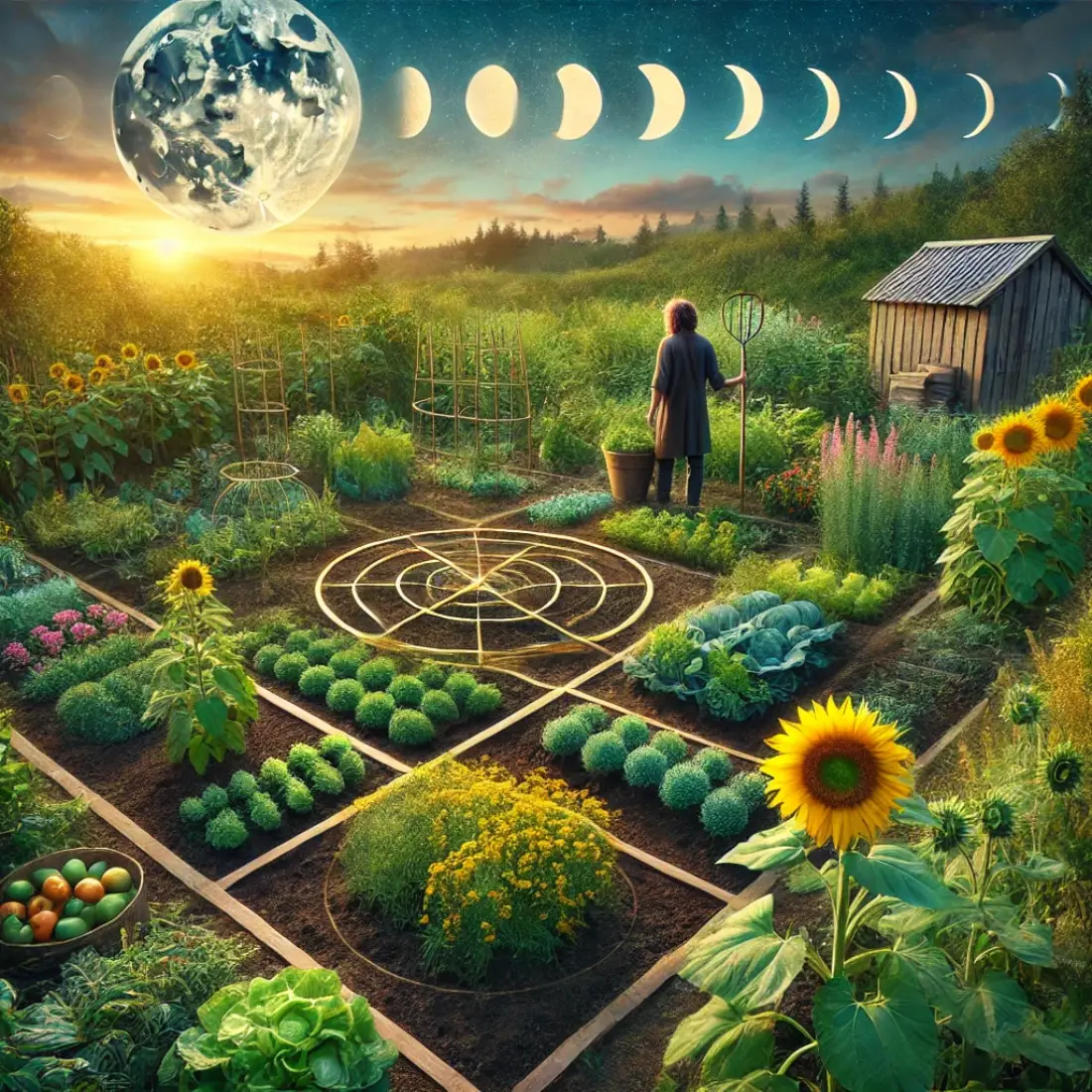Autumn is the perfect time to start composting, thanks to the abundance of fallen leaves and other organic waste from your garden and kitchen. By composting these materials, you create a nutrient-rich soil amendment that will benefit your garden when spring arrives. Not only does it reduce waste sent to landfills, but it also improves soil structure and fertility.
- Composting in autumn maximizes use of fallen leaves and organic waste for nutrient-rich soil.
- Mixing brown (carbon-rich) materials like fallen leaves with green (nitrogen-rich) materials is essential for balanced composting.
- The process helps recycle organic waste and reduces environmental impact, preparing gardens for healthy spring growth.
Why Composting in Autumn is Ideal
Autumn offers the perfect conditions for composting due to the abundance of fallen leaves and organic materials that are readily available. This natural debris provides a valuable source of carbon-rich brown materials, which are essential for balancing the nitrogen in your compost pile. Fallen leaves, grass clippings, and end-of-season garden waste all contribute to a well-balanced compost mixture.
The cooler temperatures of autumn slow down the decomposition process slightly, but with proper layering and care, your compost pile will still break down efficiently. Composting in autumn also helps you prepare your garden for spring planting, as the compost will have time to mature over the winter months, providing your soil with nutrient-rich organic matter by the time the growing season begins.
Additionally, composting fallen leaves and yard waste reduces the need to send this organic matter to landfills, helping to lower your carbon footprint. By starting in autumn, you take advantage of the season’s natural cycle of leaf fall, creating a more sustainable and environmentally-friendly approach to garden waste management. Autumn composting not only tidies up your yard but also provides long-term benefits for your garden’s health.
Step-by-Step Guide to Composting in Autumn
1. Gather Your Materials
Start by collecting fallen leaves, grass clippings, and other organic waste such as fruit and vegetable scraps. Fallen leaves provide the carbon-rich component (browns), while kitchen waste and green garden materials supply the necessary nitrogen (greens). Avoid composting diseased plants, weeds with seeds, or inorganic materials.
2. Layer Your Compost
In autumn, layering is key. Begin with a layer of browns (dried leaves or straw) at the bottom of your compost bin or pile. Follow with a thin layer of greens like kitchen scraps or grass clippings. Alternate between brown and green layers, maintaining a 3:1 ratio (more browns than greens) to ensure proper decomposition and avoid odors.
3. Maintain the Pile
Compost piles need regular attention, especially as autumn brings cooler weather. Turn the pile every few weeks to introduce oxygen and speed up decomposition. This aeration prevents your pile from becoming compacted or soggy, which can lead to slow breakdown and unpleasant smells.
4. Monitor Moisture Levels
Keep your compost pile moist, but not soggy. If your pile is too dry, add water or extra green materials to maintain the right balance. If it’s too wet, add more leaves or brown materials. In cooler weather, consider covering your compost to retain warmth and moisture.
When to Harvest Your Autumn Compost
Autumn compost typically takes 3 to 6 months to fully break down, depending on factors like temperature, moisture, and the balance of materials. You’ll know it’s ready to harvest when the compost has a dark, crumbly texture and a rich, earthy smell. The original materials, such as leaves and food scraps, should no longer be recognizable.
Once your compost reaches this stage, it can be added directly to your garden beds or stored for use in the spring. If you’re not using it immediately, you can keep it in a covered container or bag to maintain its quality. Applying the compost before winter helps enrich your garden soil, improving its structure and nutrient content for the growing season ahead.
Common Problems and Solutions for Autumn Composting
- Slow Decomposition: Cooler autumn temperatures can slow down the composting process. To combat this, insulate your compost pile by adding extra layers of leaves or straw. Also, turning the pile more frequently introduces oxygen and helps speed up decomposition.
- Excess Moisture: Autumn rains can make your compost pile too wet, leading to foul smells and a slimy texture. To fix this, add more brown materials like dry leaves or straw to absorb excess moisture. Cover your compost pile with a tarp to prevent it from becoming waterlogged.
- Dry Pile: On the other hand, windy autumn weather can dry out your compost. If the pile becomes too dry, materials will not break down efficiently. Keep your pile moist, but not soaked. Add water sparingly or mix in green materials like kitchen scraps to restore moisture.
- Pests and Animals: In autumn, animals might be drawn to your compost pile. Avoid attracting pests by not adding meat, dairy, or oily foods. If pests persist, consider using a covered compost bin or secure wire mesh around your pile.
FAQs about Composting in Autumn
Can I compost all types of fallen leaves?
While most leaves are great for composting, avoid toxic ones like black walnut or eucalyptus, as they can inhibit plant growth. Shredding large leaves like maple helps them break down faster.
Should I shred fallen leaves before composting?
Shredding is recommended because smaller pieces decompose more quickly. However, it’s not essential. If you don’t shred, turning the pile regularly will still ensure decomposition.
How long does autumn compost take to break down?
Typically, 3 to 6 months, depending on factors like temperature, moisture, and the mix of materials. Regular turning and a balanced brown-to-green ratio will speed up the process.
What’s the right balance of materials in my compost?
Aim for a 3:1 ratio of brown materials (fallen leaves) to green materials (food scraps, grass clippings). This ensures efficient breakdown without odors.
Can I compost in a small backyard during autumn?
Yes! Even small spaces can benefit from a compost bin or compact pile. A closed bin helps control odors and keeps the process tidy.
Can I compost kitchen scraps in autumn?
Absolutely! Vegetable peels, coffee grounds, and fruit scraps provide nitrogen, balancing the carbon-rich leaves in your compost pile.
Is it okay to compost diseased plants?
No. Avoid adding diseased plants or leaves to your compost pile, as this could spread disease in your garden when the compost is applied.
What can I do if my compost smells bad?
Bad odors are usually a sign of too much moisture or lack of oxygen. Add more brown materials, turn the pile for aeration, and ensure proper drainage.
Can I compost grass clippings in autumn?
Yes, but mix them with plenty of dry leaves or brown materials to prevent them from compacting and becoming slimy.
How can I keep my compost active in colder autumn temperatures?
Insulate your pile with extra leaves or straw, and turn it more frequently to keep air circulating and generate heat for decomposition.










